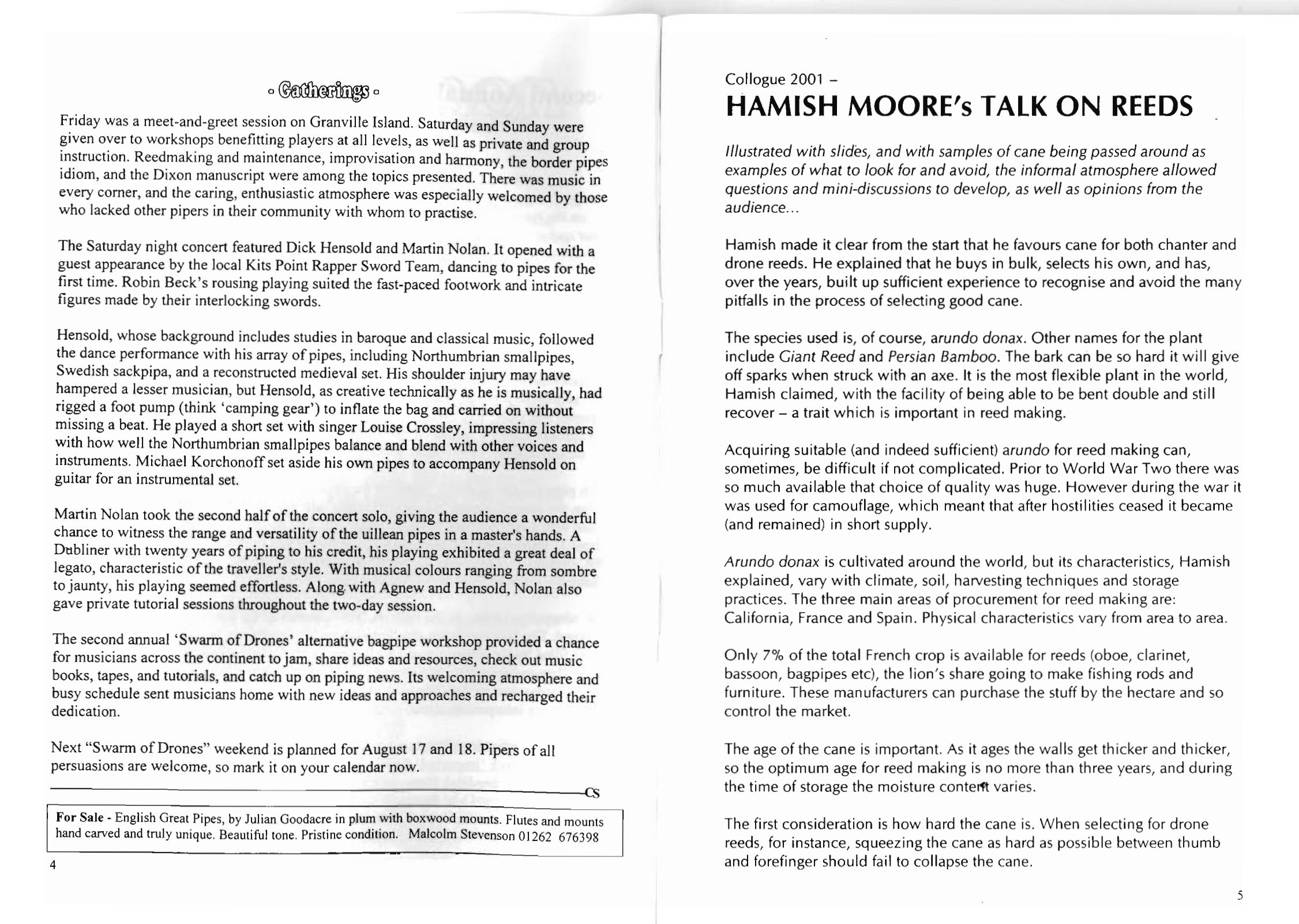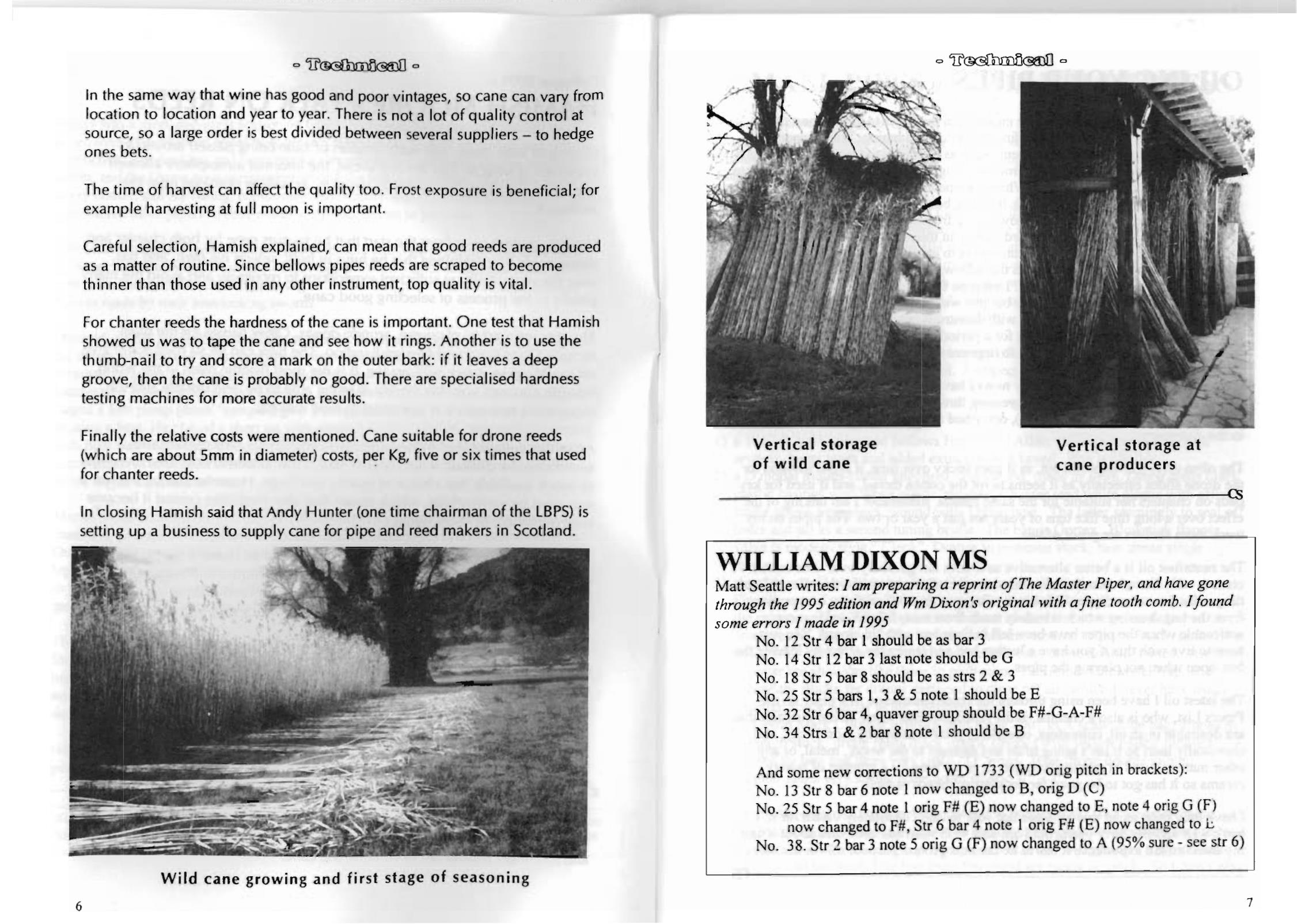Hamish Moore on Reeds


Illustrated with slides, and with samples of cane being passed around as examples of what to look for and avoid, the informal atmosphere allowed questions and mini-discussions to develop, as well as opinions from the audience...
Hamish made it clear from the start that he favours cane for both chanter and drone reeds. He explained that he buys in bulk, selects his own, and has, over the years, built up suffi- cient experience to recognise and avoid the many pitfalls in the process of selecting good cane.
The species used is, of course, arundo donax. Other names for the plant include Giant Reed and Persian Bamboo. The bark can be so hard it will give off sparks when struck with an axe. It is the most flexible plant in the world, Hamish claimed, with the facility of being able to be bent double and still recover - a trait which is important in reed making.
Acquiring suitable (and indeed sufficient) arundo for reed making can, sometimes, be diffi- cult if not complicated. Prior to World War Two there was so much available that choice of quality was huge. However during the war it was used for camouflage, which meant that after hostilities ceased it became (and remained) in short supply.
Arundo donax is cultivated around the world, but its characteristics, Hamish explained, vary with climate, soil, harvesting techniques and storage practices. The three main areas of pro- curement for reed making are: California, France and Spain. Physical characteristics vary from area to area.
Only 7% of the total French crop is available for reeds (oboe, clarinet, bassoon, bagpipes etc), the lion’s share going to make fishing rods and furniture. These manufacturers can pur- chase the stuff by the hectare and so control the market.
The age of the cane is important. As it ages the walls get thicker and thicker, so the opti- mum age for reed making is no more than three years, and during the time of storage the moisture content varies.
The first consideration is how hard the cane is. When selecting for drone reeds, for instance, squeezing the cane as hard as possible between thumb and forefinger should fail to collapse the cane.
In the same way that wine has good and poor vintages, so cane can vary from location to location and year to year. There is not a lot of quality control at source, so a large order is best divided between several suppliers - to hedge ones bets.
The time of harvest can affect the quality too. Frost exposure is beneficial; for example har- vesting at full moon is important.
Careful selection, Hamish explained, can mean that good reeds are produced as a matter of routine. Since bellows pipes reeds are scraped to become thinner than those used in any other instrument, top quality is vital.
For chanter reeds the hardness of the cane is important. One test that Hamish showed us was to tape the cane and see how it rings. Another is to use the thumb-nail to try and score a mark on the outer bark: if it leaves a deep groove, then the cane is probably no good. There are specialised hardness testing machines for more accurate results.
Finally the relative costs were mentioned. Cane suitable for drone reeds (which are about 5mm in diameter) costs, per Kg, five or six times that used for chanter reeds.
In closing Hamish said that Andy Hunter (one time chairman of the LBPS) is setting up a business to supply cane for pipe and reed makers in Scotland.
